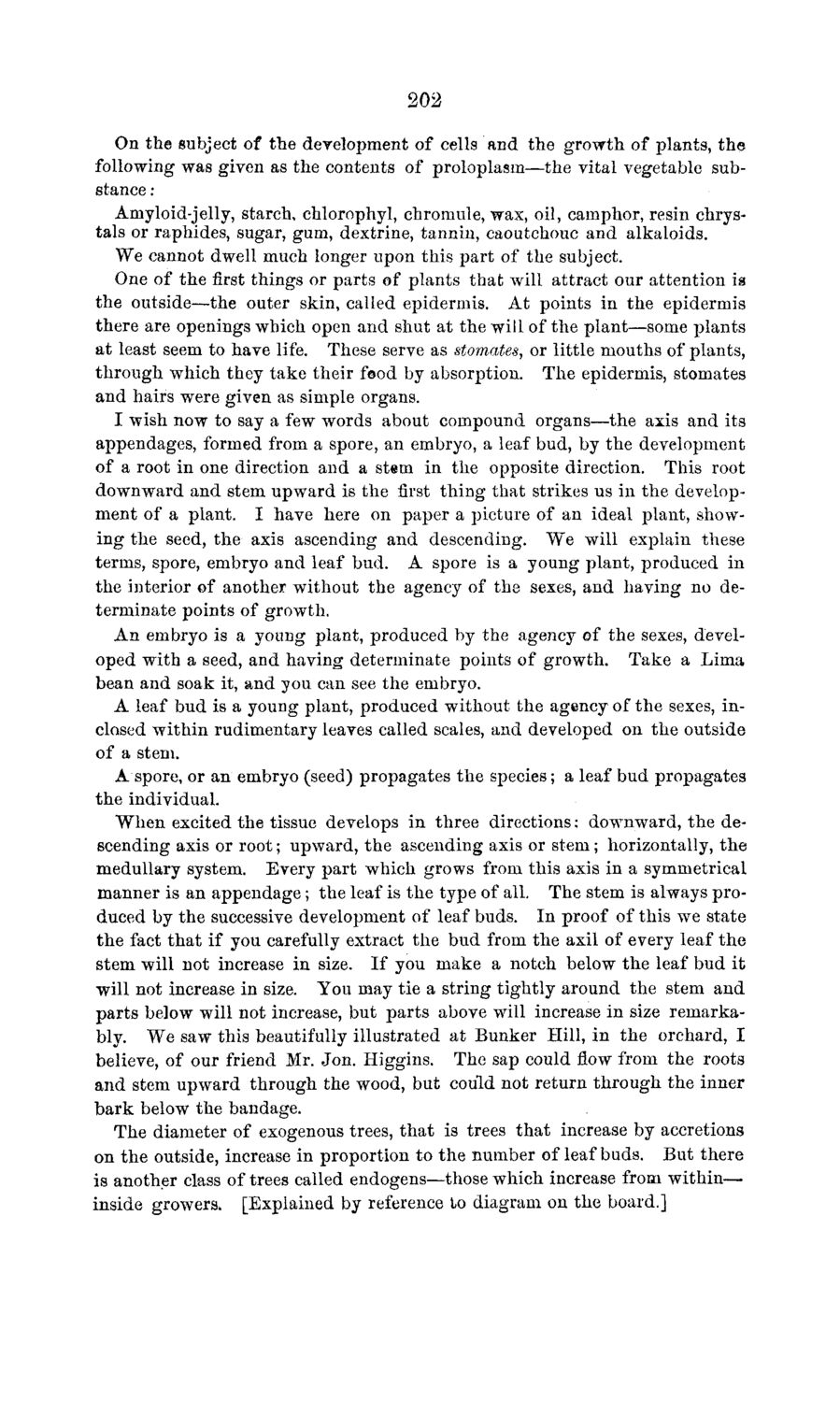| |
| |
Caption: Board of Trustees Minutes - 1869
This is a reduced-resolution page image for fast online browsing.

EXTRACTED TEXT FROM PAGE:
202 On the subject of t h e development of cells and the growth of plants, t h e following was given as the contents of proloplasm—the vital vegetable substance : Amyloid-jelly, starch, chlorophyl, chromule, wax, oil, camphor, resin chrystals or raphides, sugar, gum, dextrine, tannin, caoutchouc and alkaloids. We cannot dwell much longer upon this part of the subject. One of t h e first things or parts of plants that will attract our attention is the outside—the outer skin, called epidermis. At points in the epidermis there are openings which open and shut at the will of the plant—some plants at least seem to have life. These serve as stomates, or little mouths of plants, through which they take their food by absorption. The epidermis, stomates and hairs were given as simple organs. I wish now to say a few words about compound organs—the axis and its appendages, formed from a spore, an embryo, a leaf bud, by the development of a root in one direction and a stem in the opposite direction. This root downward and stem upward is the first thing that strikes us in the development of a plant. I have here on paper a picture of an ideal plant, showing the seed, the axis ascending and descending. We will explain these terms, spore, embryo and leaf bud. A spore is a young plant, produced in the interior of another without the agency of the sexes, and having no determinate points of growth. An embryo is a young plant, produced by the agency of the sexes, developed with a seed, and having determinate points of growth. Take a Lima bean and soak it, and you can see the embryo. A leaf bud is a young plant, produced without the agency of t h e sexes, inclosed within rudimentary leaves called scales, and developed on the outside of a stem. A spore, or an embryo (seed) propagates the species; a leaf bud propagates the individual. W h e n excited the tissue develops in three directions: downward, the descending axis or root; upward, the ascending axis or stem; horizontally, t h e medullary system. Every part which grows from this axis in a symmetrical manner is an appendage; the leaf is the type of alL The stem is always produced by the successive development of leaf buds. In proof of this we state the fact that if you carefully extract the bud from the axil of every leaf t h e stem will not increase in size. If you make a notch below the leaf bud it will not increase in size. You may tie a string tightly around the stem a n d parts below will not increase, but parts above will increase in size remarkably. We saw this beautifully illustrated at Bunker Hill, in the orchard, I believe, of our friend Mr. Jon. Higgins. The sap could flow from t h e roots and stem upward through the wood, but could not return through the inner b a r k below the bandage. The diameter of exogenous trees, t h a t is trees t h a t increase by accretions on the outside, increase in proportion to the number of leaf buds. But there is another class of trees called endogens—those which increase from within— inside growers* [Explained by reference to diagram on the board.]
| |